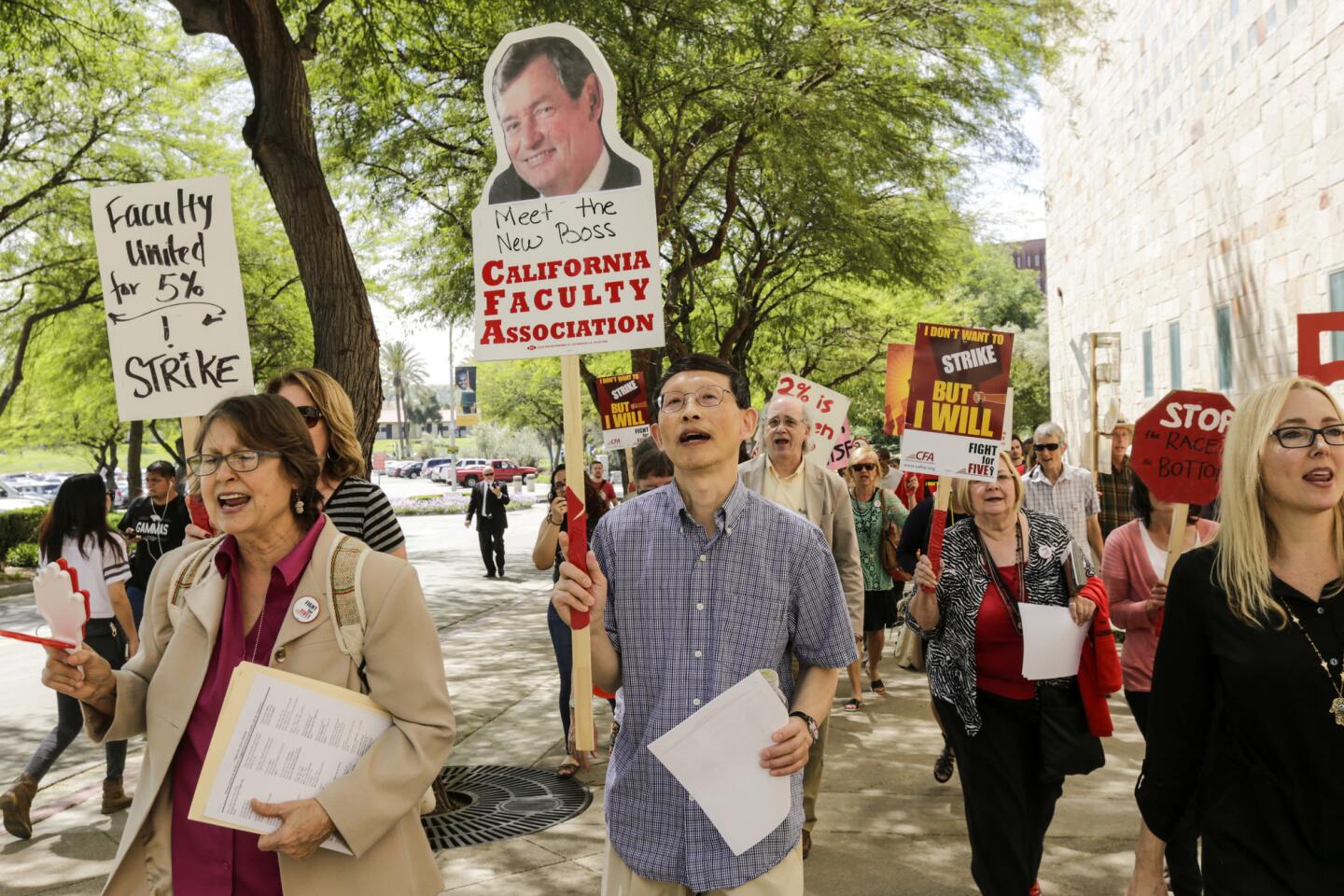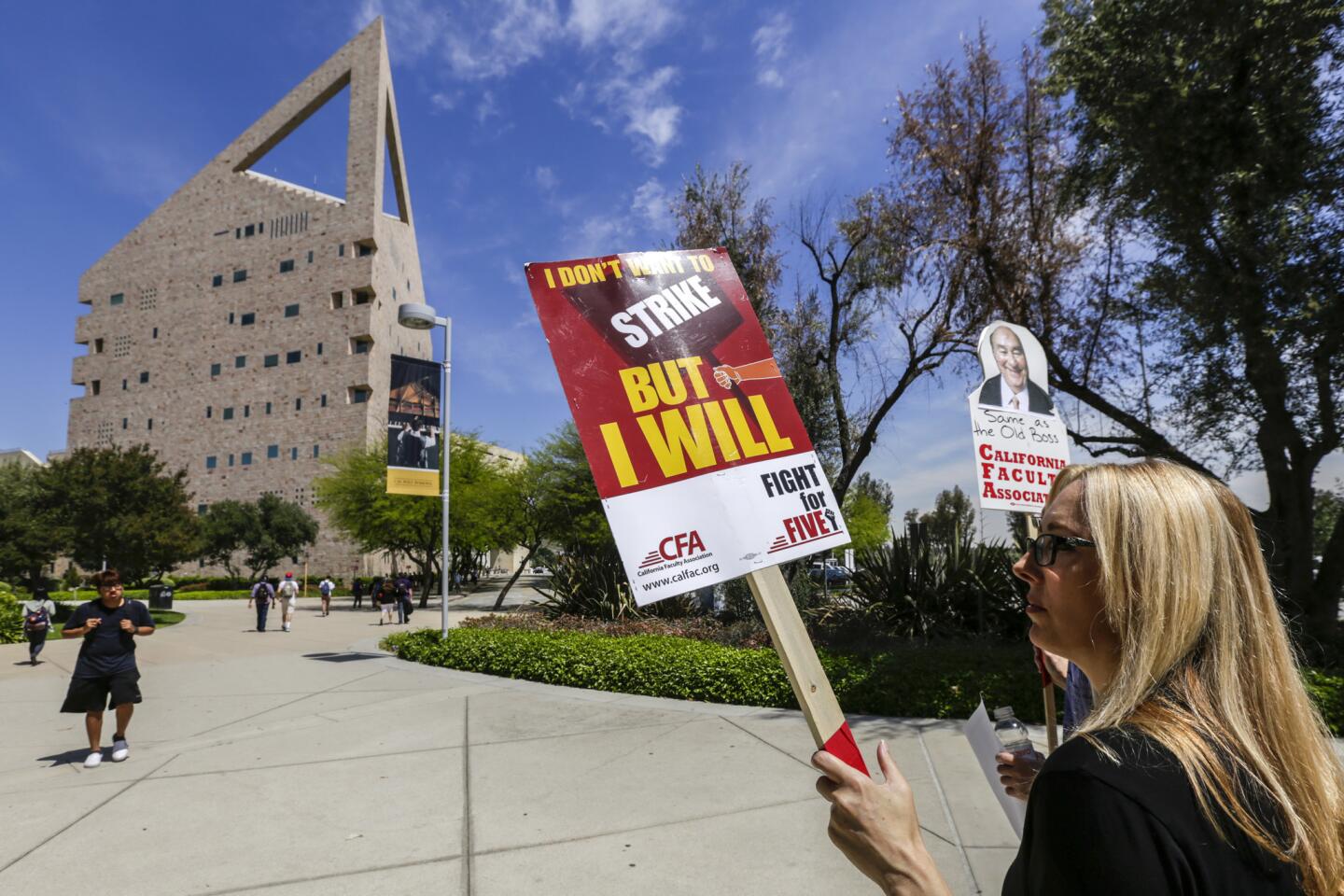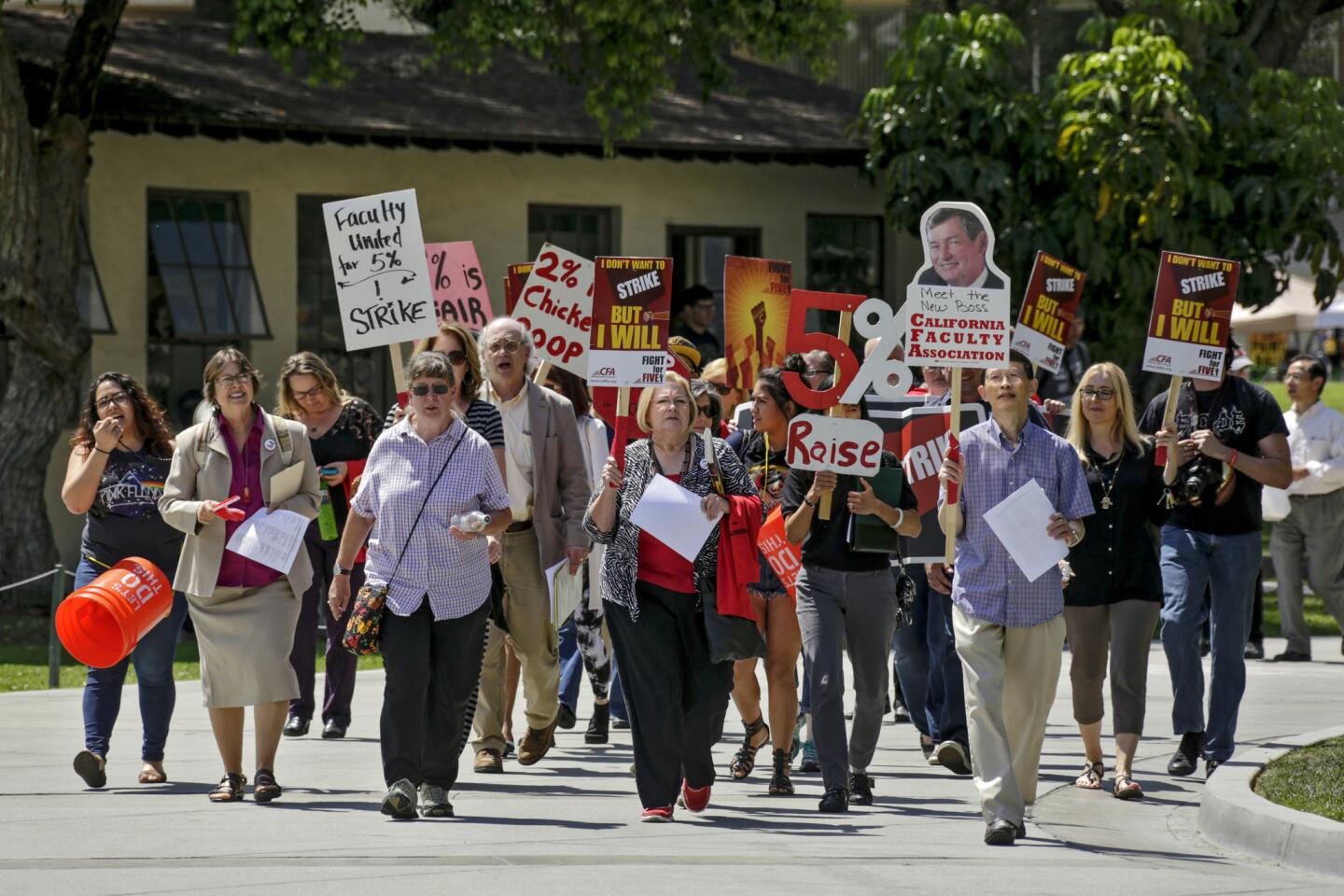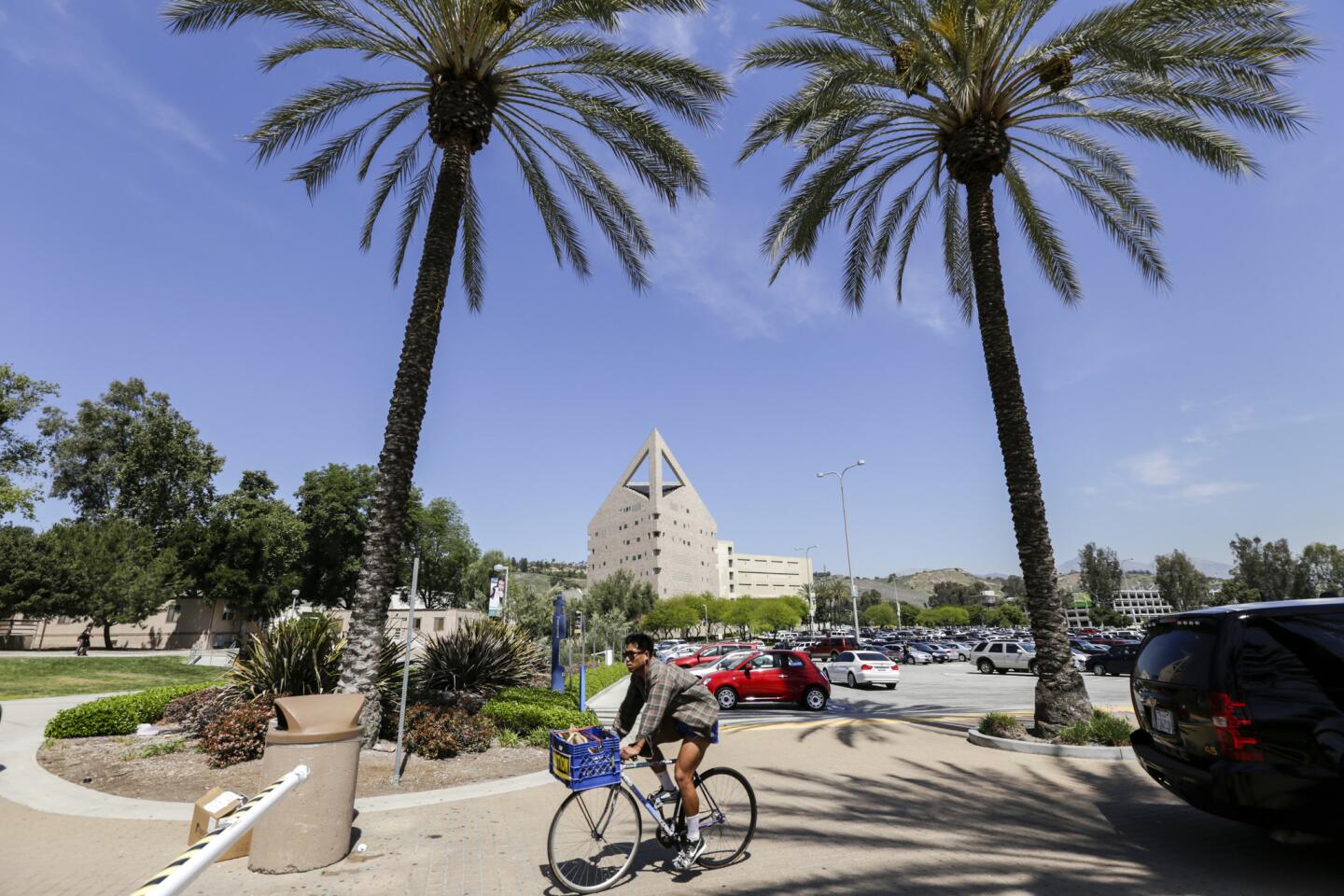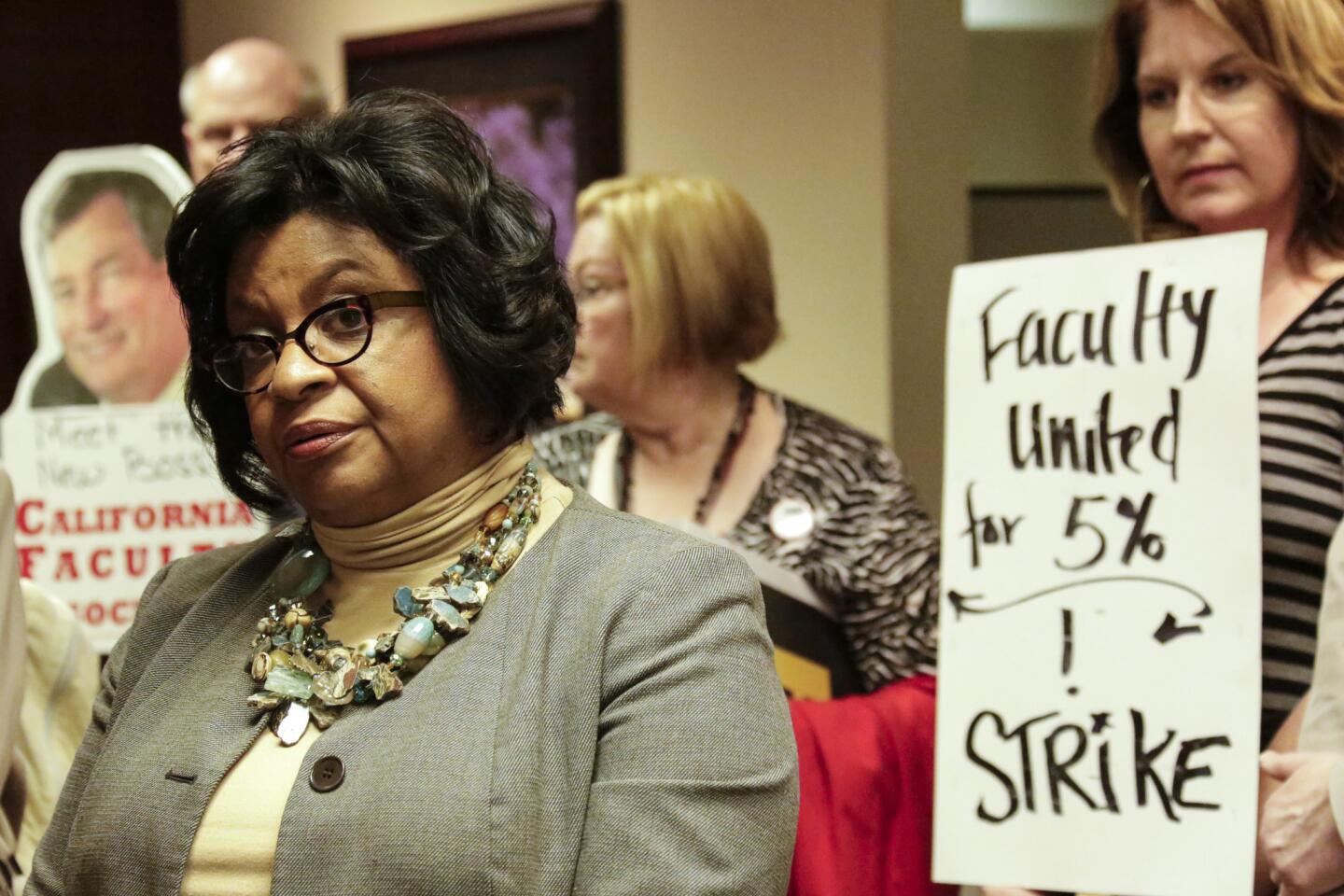Cal State and faculty union agree to 10.5% salary raise over three years
Averting a massive faculty strike scheduled to begin next week across all 23 California State University campuses, officials and the faculty union have reached a tentative agreement of a 10.5% salary increase spread over three years.
A 5% across-the-board raise will be granted this year on June 30, at the end of the budget cycle, Cal State Chancellor Timothy P. White said Friday. The next day, July 1, a 2% raise will take effect. Faculty members will essentially see a 7% salary increase starting in July.
Then in July 2017, the remaining 3.5% increase will be added, and faculty who qualify for service credit will receive an additional 2.65% increase, White said.
“We’re actually very pleased about what we were able to craft here,” White said. “I could not be more delighted that our students will be spared the interruption of the strike. I was extremely concerned by this prospect. But that’s behind us now.”
NEWSLETTER: Get essential California headlines delivered daily >>
Having more time to secure the money to fund these salary increases was crucial, he said. Earlier conversations were focused on a budget year with less than three months left in it.
“The difference between before and now is there’s 27 months, two state budget cycles, breathing room and the chance to work with folks in Sacramento to get this done,” White said. “The problem with salaries took many years to develop, and likewise, takes many years to solve.”
All told, the 10.5% increase over three budget years will cost the Cal State system about $200 million, with roughly $10 million more to honor fairness or “me too” clauses, White said. Administrators have identified about $68 million to cover the salary increases going into July and are hopeful they will secure additional funding from the state by the end of the next budget cycle.
No other Cal State priorities have been compromised as part of this deal, he said. “The innovations that we were able to come to agreement on allow us to invest in faculty but also continue to invest in those other areas of enrolling more Californians, improving graduation rates, basic facility upkeep for the learning environment, and basic IT for the instruction and research and operations of the university.”
In addition, tenure-track faculty who are promoted from assistant to associate professor, or associate to full, will receive a minimum salary increase of 9%. Previously, the minimum was 7.5% for merit-based promotions.
As part of the deal, the California Faculty Assn., which represents 26,000 faculty members, agreed to double the time it takes for a faculty member to be vested for retiree health benefits.
Faculty hired on or after July 1, 2017, will receive full health benefits on retirement at age 50 with at least 10 years of service credit, instead of five.
Going forward, the union and the Cal State administration have committed to lobbying together to help identify new funding resources as well as manage the costs within the university.
“Most of us are not radicals, and all of this militant activity is not what we wanted to be doing,” said union President Jennifer Eagan. “This agreement will alter the course of our relationship with the chancellor. ... We will continue working together to ensure that CSU fulfills its mission for years to come.”
See more of our top stories on Facebook >>
In a letter to union members Friday, Eagan wrote: “You made this happen. Your creativity and style, from your red outfits to your hall-walking rap to speaking truth to power, have been inspiring. Preparing for the strike, your work on the campuses helped us secure this agreement.”
Both parties are relieved they were able to reach this agreement, which held off an unprecedented strike planned for next week that could have crippled the nation’s largest higher education system.
Even with the strike averted, many of the issues that have plagued the “people’s university” for decades remain to be settled, faculty members and others said.
Tensions had been mounting. The faculty group had demanded a 5% pay raise, citing studies that show Cal State has the money to do so and that faculty members are underpaid compared with those at other public institutions.
University officials, facing financial pressures since state budget cuts during the recession, said there was room in the budget for only a 2% raise, with additional increases possible in the future.
It was a tough situation for Cal State, officials said. The system lost more than $1 billion in funding during the recession. Even with gradual funding increases brokered under a budget deal with Gov. Jerry Brown, the system is still about $135 million below 2008 funding levels.
State funding for the UC and Cal State systems have declined dramatically since the 1980s, when Cal Sate received about $10,000 per student, according to data from the Public Policy Institute of California. In 2011, that figure had dropped to less than $6,000 per student, after adjusting for inflation.
Cal State has trimmed expenses in recent years by restricting the growth of enrollment, among other measures, but has relied primarily on tuition increases to help fill the funding gap, which is not politically popular or in line with the greater vision of public higher education in California, said Hans Johnson, senior research fellow at the institute.
“Our public higher education system has been critical to the state’s economic success,” Johnson said. “No one argues that.”
Friday’s tentative agreement needs final approval by California Faculty Assn. members and the board. Once ratified by the union, the tentative agreement will be voted on in May by the Cal State Board of Trustees.
Follow @RosannaXia on Twitter for more higher education news.
ALSO
What’s your chance of a pay raise? In California, it depends on what you’re doing
Teen suspect faces murder charge in University of Texas student’s death
Justice Department still seeks Apple’s help to unlock a drug dealer’s iPhone
More to Read
Sign up for Essential California
The most important California stories and recommendations in your inbox every morning.
You may occasionally receive promotional content from the Los Angeles Times.
